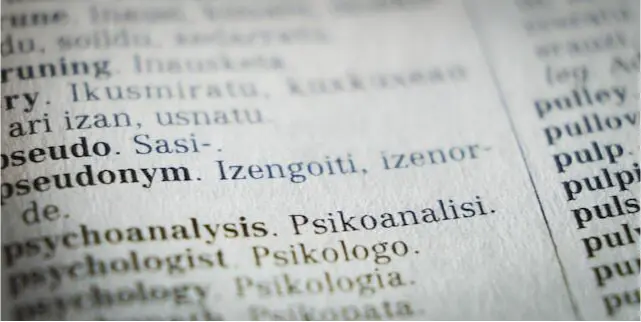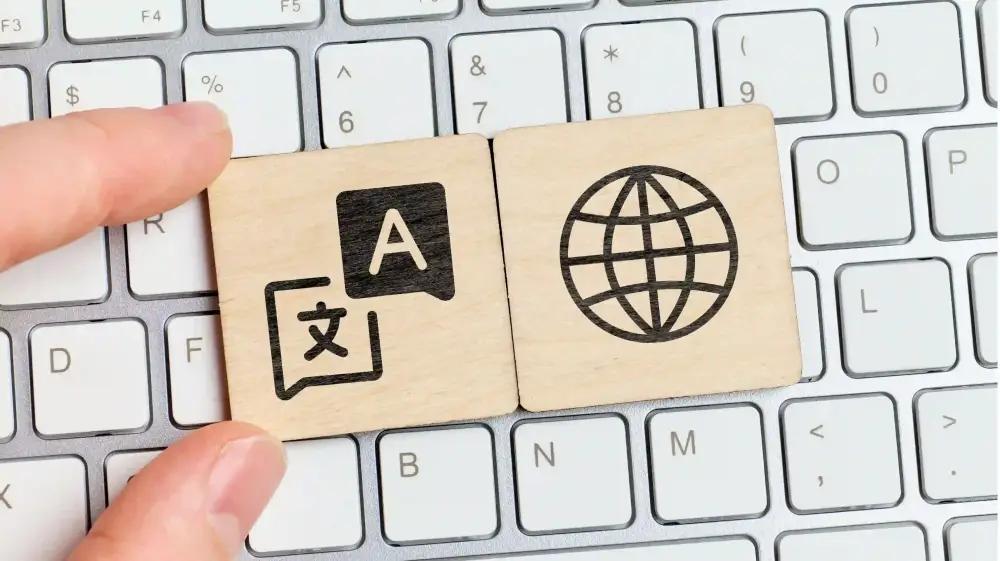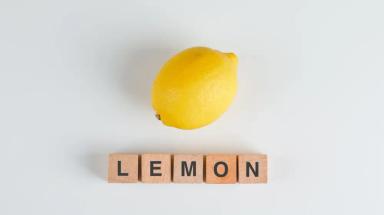What is The Most Accurate Definition of Translation? (Best Definition)
Translation is a mental activity that involves translating the meaning of a given written or spoken message from one language to another.
It is essentially converting words or phrases from one language to their equivalents in another. The term “Translation” can be used to describe both the process and the finished product.
When reading something in a foreign language, your first instinct for translation methods might be to use Google Translate. And there is nothing inherently wrong with that! Google Translate and similar machine translation tools have come a long way and can now accurately translate portions of a certain text.
That is until the machine translation tool gets it wrong and the words “they fall under the same umbrella” in English awkwardly end up as “يقعون تحت نفس المظلة” in Arabic.
A professional translator would recognize the importance of considering the overall context rather than attempting a word-for-word translation.
ion.
Get our translation and writing services now
-
Have you ever used Google Translate? Of course, you did!
-
Have you ever seen funny Google Translate fails? Of course, you have!
Translating long sentences can be tricky, especially if you are trying to do it quickly, like with Google Translate. This can lead to some really funny stories. Maybe a bit confusing? Amusing.
But what are the methods of translation? In a professional setting, translators use accurate methods of translation or ways of translation that we will list later on in our blog…
It is important to learn about what are the methods of translation because they produce drastically different results in terms of translation quality, turnaround time, and cost.
Get our app localization services now

What is The Process of Translation?
Before delving into the specific methods of translation, let us first walk through the translation process to gain a better understanding of these methods.
Almost all types of translations can be handled with a 5-step best practice! Those Steps will ensure that the translation is one of the highest qualities!
1- Overview
As a first step, you will scope out your source text. Flip the investigating switch on, and start identifying text type (scientific, technical, etc.), subject, context, style, and length,
Before beginning to translate, you should see the bigger picture. Translators may conduct research and decide how they will translate key terms. They may make a list of key concepts or terminology to research and decide whether any preliminary background reading is required.
Typically, the translator will read or skim-read portions of the text to get a sense of the content.
This step is a research step. No translations…
Get our game translation services now
2- Translation
Now it is translation time! Translators translate the document systematically, usually handling 1 phrase (5 - 10 words) at a time.
It is critical to select the appropriate length of individual text chunks to deal with. Ideally, each chunk should represent a distinct and complete unit of meaning.
Each chunk must also be brief enough to be retained in short-term memory. Anything more than 10 words can be difficult to translate into a single phrase. Moreover, dealing with excessively long chunks increases the risk of losing some meaning during the translation process.
Since paragraphs are often longer than what we described above, they need to be broken down into shorter phrases.
However, it should be noted that working with chunks that are way too short or chunks that do not contain distinct meaning units can lead to unnatural, potentially ambiguous, and sometimes meaningless translations!
In this step, it is best to read the entire paragraph and fully grasp its context so that you can accurately translate each phrase while employing one of the translation methods.
Certified Translation Demystified: Who, When, and Why You Need It
Certified Translation Demystified: Who, When, and Why You Need It
3- Review
After completing the first draft of the translation, the translator goes through the text part by part, comparing each chunk of the (target) text with the original (source) text, ensuring alignment of the meaning of the overall context, according to the chosen translation method.
In the proofreading and editing phase, the translator primarily aims to ensure that they haven't missed any information or misinterpreted any meaning. In this step, most translators will also spot and improve any slightly awkward wording, aiming to refine their translations to reach the most accurate version that matches the original text.
Get our technical translation services now
4- Break
The next step is very simple, straightforward, and fun! Set aside the translation, put it away in a safe place, and take a break.
This should ideally be done for a few hours or overnight. Take your pet for a walk, or sleep. Refresh your mind.
The goal here is to clear the mind in order to perform the fifth and final step more efficiently and effectively!
5- Refine
The translator then re-reads and re-edits his translation, this time without comparing the (target) text to the (source) text. No reference to the source document, solely focusing on expression quality.
This is a quality assurance step. Final edits will be made to refine and "polish" the translated text.
Breaking Barriers: Inspiring Interlingual Translation Examples
Why is a translation process required?
A translation process is essential because translation is a surprisingly difficult task that requires complex mental processing.
Given that translation involves a mental activity, which inherently requires organization, it is crucial to recognize that a translation should never be considered done after a single pass.
There are a few other reasons as to why a strict process is required in translation. One reason is that a consistent process helps to maintain consistency across translations, ensuring that the result is nothing short of perfection.
Secondly, accuracy is key in translation. Even the slightest mistake can change the meaning of the text entirely. This means that the translator needs to follow the best practices to produce a high-quality translation and to avoid nonsensical and tragic mistakes.
Subtitling Made Simple: Tips and Techniques for Learning
Do all translators adhere to this translation process?
In a nutshell, no.
This 5-step methodology is taught to professional translators as part of their translation studies in colleges and universities. However, the same cannot be said for untrained translators.
Because it has been drilled into them and they understand its importance, professional translators automatically follow this method and avoid taking shortcuts.
This is the standard procedure followed by professional translators; it is the established method by which translations are done.
Types and Methods of Translation
What are the methods of translation?
5 main translation methods fall categorized under “human translation,” and it is crucial to be familiar with each of them!
This is because they produce very different results in terms of translation quality, turnaround time, and cost. If you choose the wrong translation methods for your translations, you may not get the best translation that is suitable for your needs. It is of paramount importance to take into account the numerous differences in culture, language, and context, before translating your materials.
We can divide translation methods into several ones based on how we decide to approach them.
The Difference Between Subtitles and Dubbing
1. Word-for-word Translation
This translation method refers to translating individual words by their most literal meaning, with little to no regard for context.
The word-for-word translation method preserves the original word order is preserved, without considering grammatical, semantic, or cultural differences between languages. it also strictly maintains the original morphology, syntax, and meaning, without introducing stylistic or linguistic changes.
Generally, word-for-word translation methods do not produce high-quality translations (think machine translation), though the reader should keep in mind that word-for-word translation methods work well on documents such as medical research reports, or technical keywords.
2. Literal Translation
Linguists translate grammatical structures in the source text into close equivalents in the target language in literal translation. This translation method involves translating words without considering their connotations, and the focus is on context as well as finding metaphorical equivalents in the target language.
The main difference between word-to-word translation and literal translation is that the former aims to preserve and retain the original meaning of the text while the latter attempts to produce a translation that has a strong resemblance to the original text by adhering as closely as possible to the original words.
Going Global: A Complete Guide to Localization in Translation
3. Communicative Translation (Interpretative Translation)
Interpretative communicative translation also referred to as faithful translation, is defined as transferring the exact contextual meaning of the source text and source language into the target text and target language.
Many specialists use communicative translation methods because they take into account the context, culture, grammar, and semantics. Although it is not always the most technically accurate option, it conveys meaning naturally and is frequently used when translating texts that contain culturally specific idioms, proverbs, or wordplay.
This method focuses on comprehending and recreating the original text without making radical changes; it is commonly used in simultaneous and consecutive translation. Also, It maintains the original text’s purpose while achieving the desired effect on the target language audience.
Get our localization services now
4. Semantic Translation
In the scenario of a semantic translation, the goal is to convey the source language's syntactic and semantic structures in the target language.
This method accurately reproduces the original text in a foreign language while preserving context and culture. Simultaneously, the semantic translation method emphasizes the aesthetic value of the source text, is more flexible, and allows the translator more creative freedom.
The main difference between semantic translation and communicative translation is that semantic translation focuses on the meaning of the text, whereas communicative translation focuses on how the text will be understood by the target audience.
Unlocking the Arab World: A Guide to Arabic Localization
Unlocking the Arab World: A Guide to Arabic Localization
5. Adaptation
Adaptation involves modifying or even completely rewriting the source text language to find equivalents in the target language that convey the same message as the original content.
Specialized linguists play a crucial role in conveying messages or ideas to the target audience in ways that are completely different from the source content. This process is sometimes referred to as transcreation.
This doesn’t mean that it’s an inaccurate translation method, but rather that translators don’t focus on the syntax and style of the source language. Instead, they reproduce a very accurate target translation but not exactly one that mirrors the original’s structure.
It is also known as idiomatic translation because it reproduces the message of the original text by using idioms and colloquialisms from the target language. This results in segments that look different and cannot be translated directly, but have very similar meanings.
Beyond Subtitles: Exploring the Various Types of Audiovisual Translation
For instance, when translators translate English movies or series to Arabic countries’ audiences, they need to adapt. Uncultured Western street people's vulgar vocabulary (curses and cusses) can, in some cases, be problematic for Easterners- and a total shock!
This is where such translation methods play a role in coming up with alternatives, completely perceptible and understandable by the target audience.
Get our legal translation services now
What is The Best Method of Translation?
Now after you know the answer to what are the methods of translation, you might be asking: ”What are the best translation methods?”
There is no one "best" method of translation, as the best approach for a given text depends on its content and purpose. A translator must consider the purpose of the text, the audience, the author's intent, and other factors when deciding on a translation method.
Some people prefer to use translations that are as close to the original text as possible, while others opt for free translations, that are easier to understand by their target audience.
Even though there are numerous translation methods, no single method can produce a high-quality translation.
Depending on the source and target languages, audiences, culture, and semantics, it may be necessary to employ different strategies simultaneously to produce a satisfying translation that will resonate with global audiences everywhere.- Of course, as long as the result remains intact!
Polishing Your Work: Tips for Editing Your Dissertation
What are The Differences Between Methods and Techniques of Translations?
It's simple: a translation method is applied to the entire text to be translated, whereas a translation technique may vary on a case-by-case basis within the same text depending on the specific elements to be translated.
Upload your file now and watch it seamlessly transform into any language of your choice!






